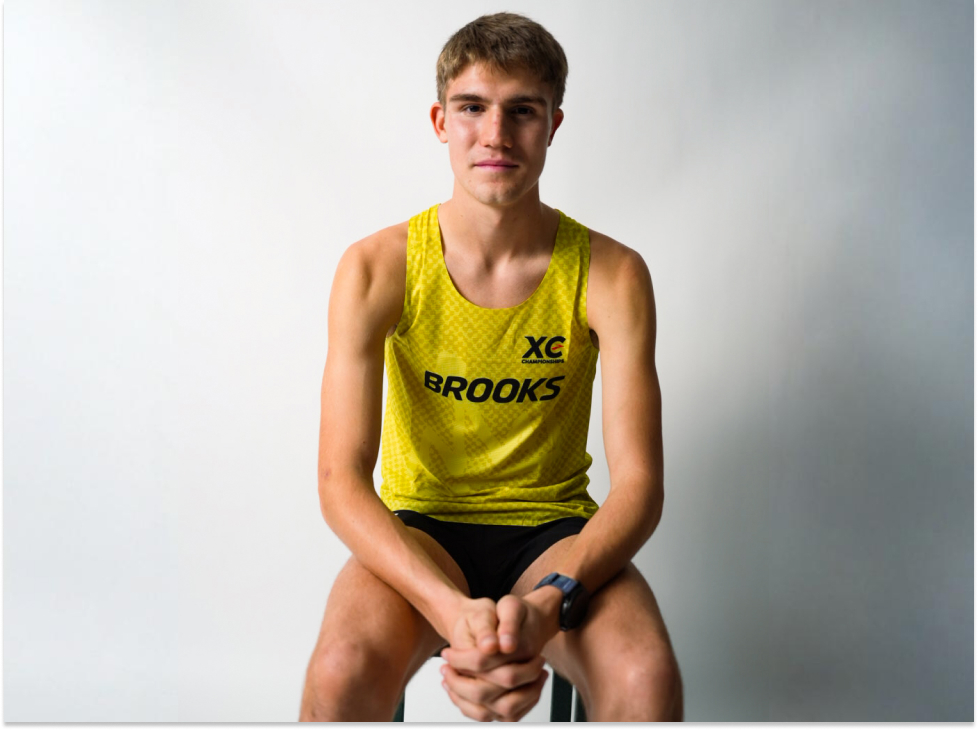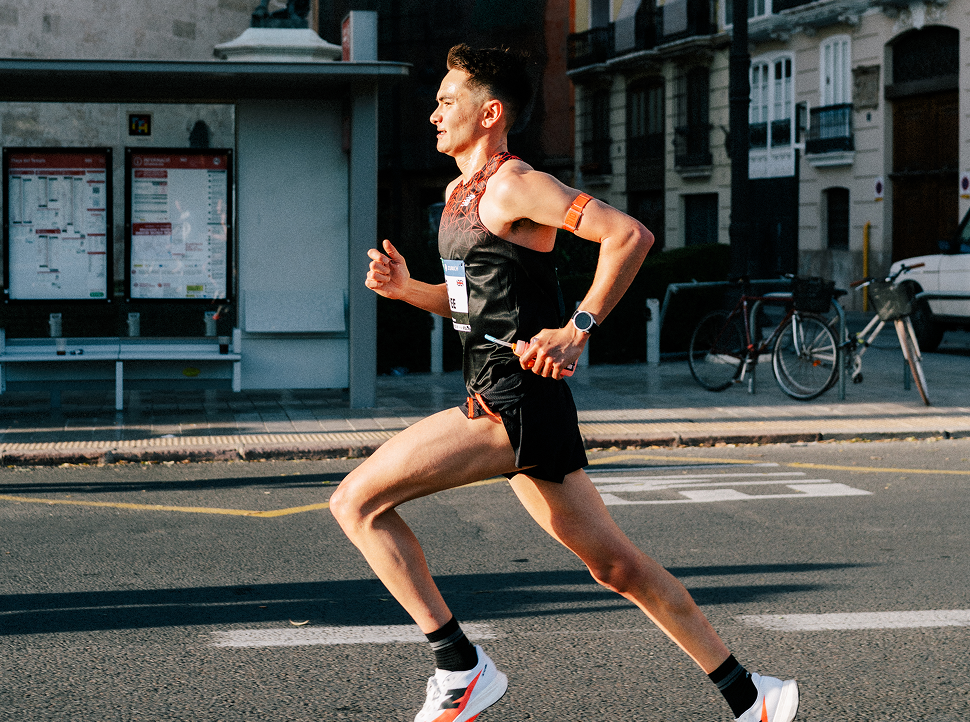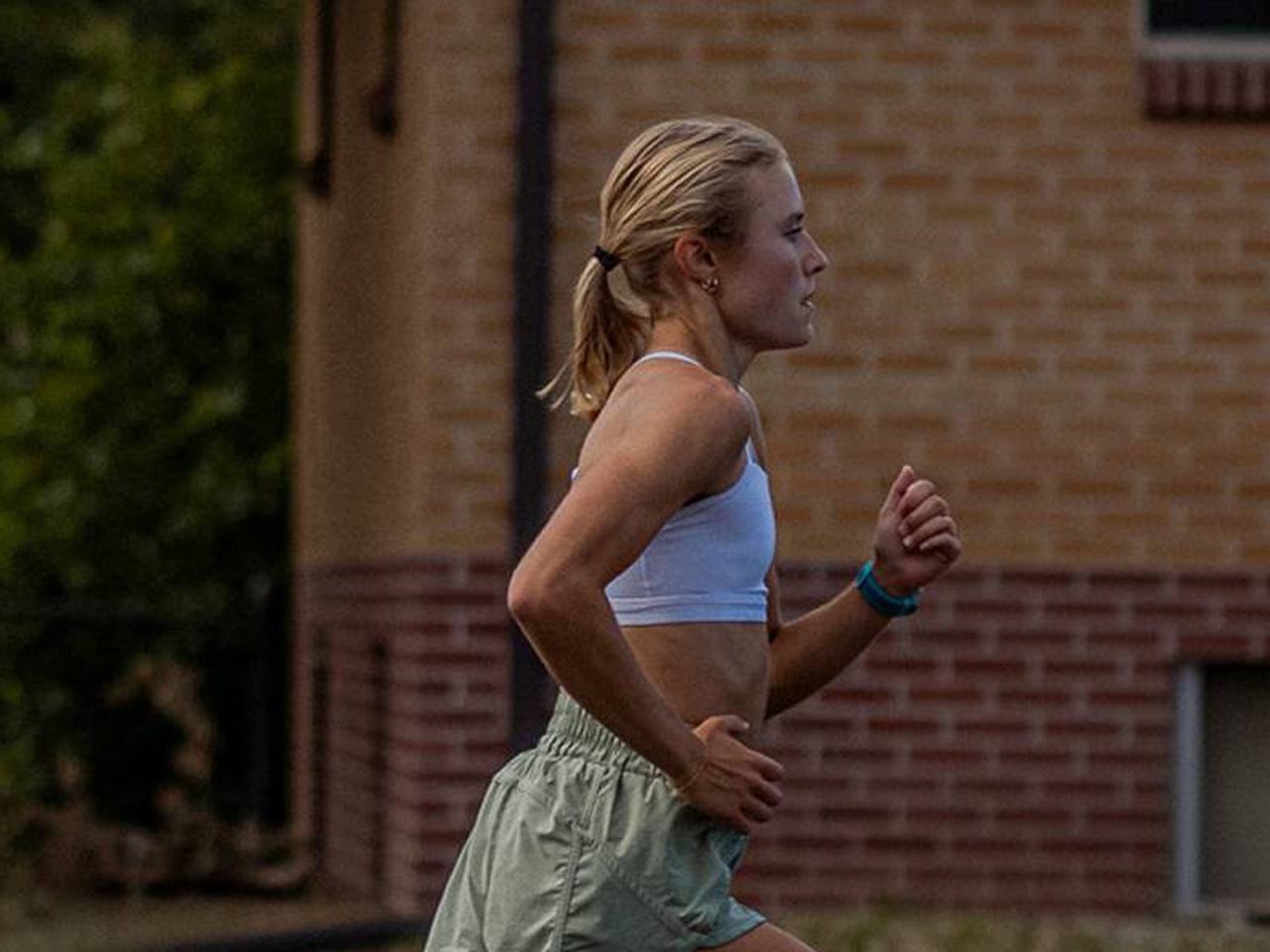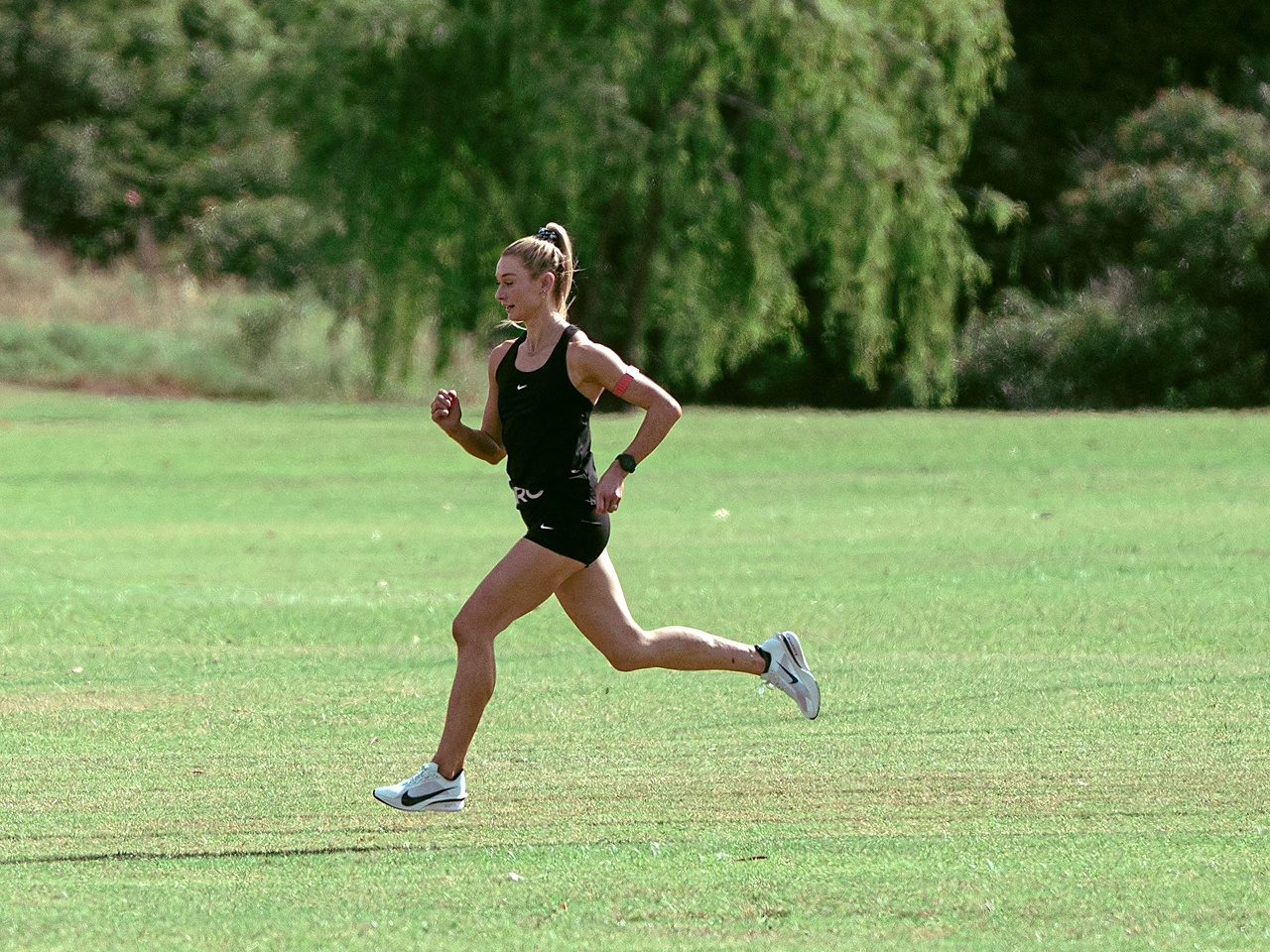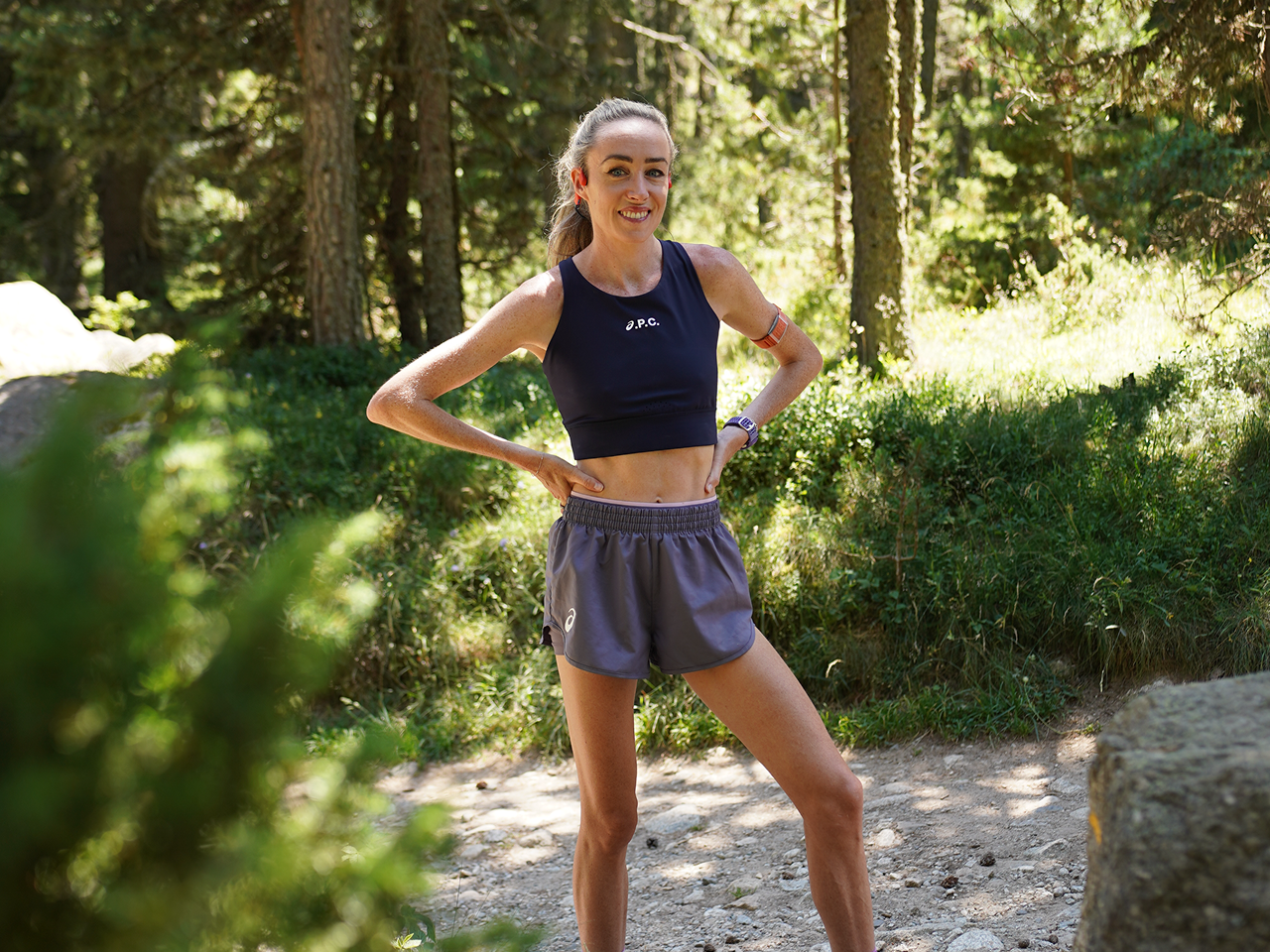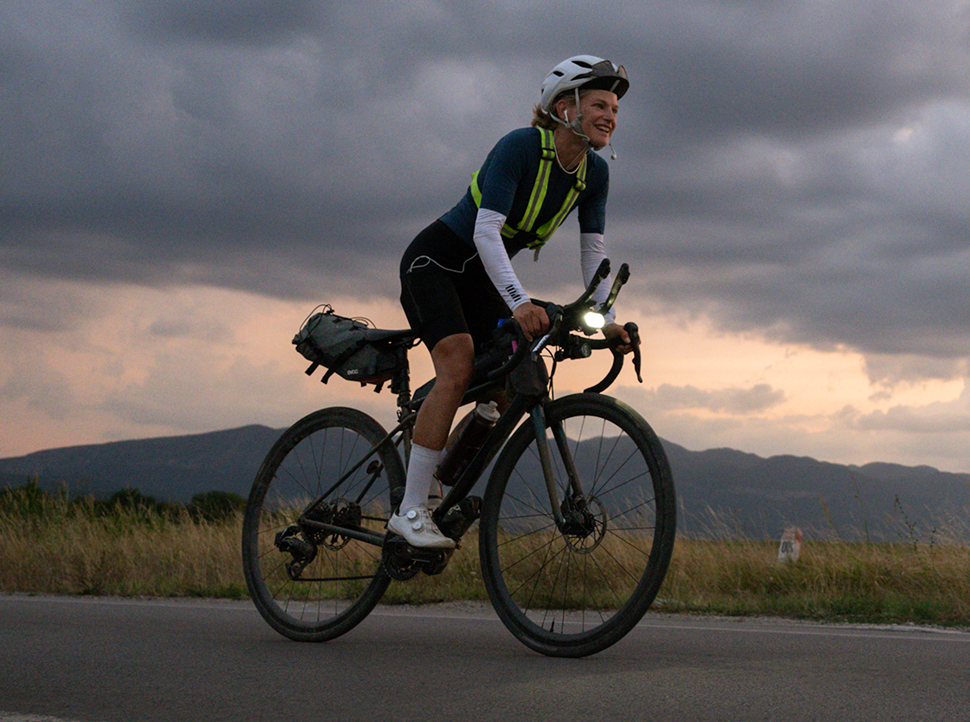Boston. The gold standard for all amateur runners. If you are passionate about marathons, you have likely looked into the time standards to qualify for this illustrious event. While the qualifying times vary based on your age and gender, there is no doubt that the runners in Boston represent the best in the world. So, what does it take to get there? How do these athletes train? How do these athletes race? We take a peak behind the curtain of three amateur athletes and how they have trained to race amongst the best in the world.
Boston Qualifying Times

Qualifying Standards From Boston Athletic Association
Each age group and gender have their own qualifying time. If your goal is to run Boston, this qualifying time is likely etched into your brain. At COROS, we want to show how three different amateurs went about training and were able to hit these qualifying times to compete in the 2023 Boston Marathon. While amateurs don’t have the luxury of training like the pros, we hope to identify key learnings from these three individuals that can help any marathoner looking to qualify for Boston.
Amateur Spotlight
All three amateurs in the spotlight are within the 18-34 age group. Two females and one male have agreed to share their training and racing data for all to learn. While each of these athletes has a connection with COROS, they all have responsibilities outside of running. Elizabeth Pehota is a journalist/reporter, Caitlyn Miller is a digital media professional, and Darian Allberry works for COROS within consumer engagement. Without further ado, let’s dig into the training metrics and how amateurs hit these qualifying standards!
Training Volume
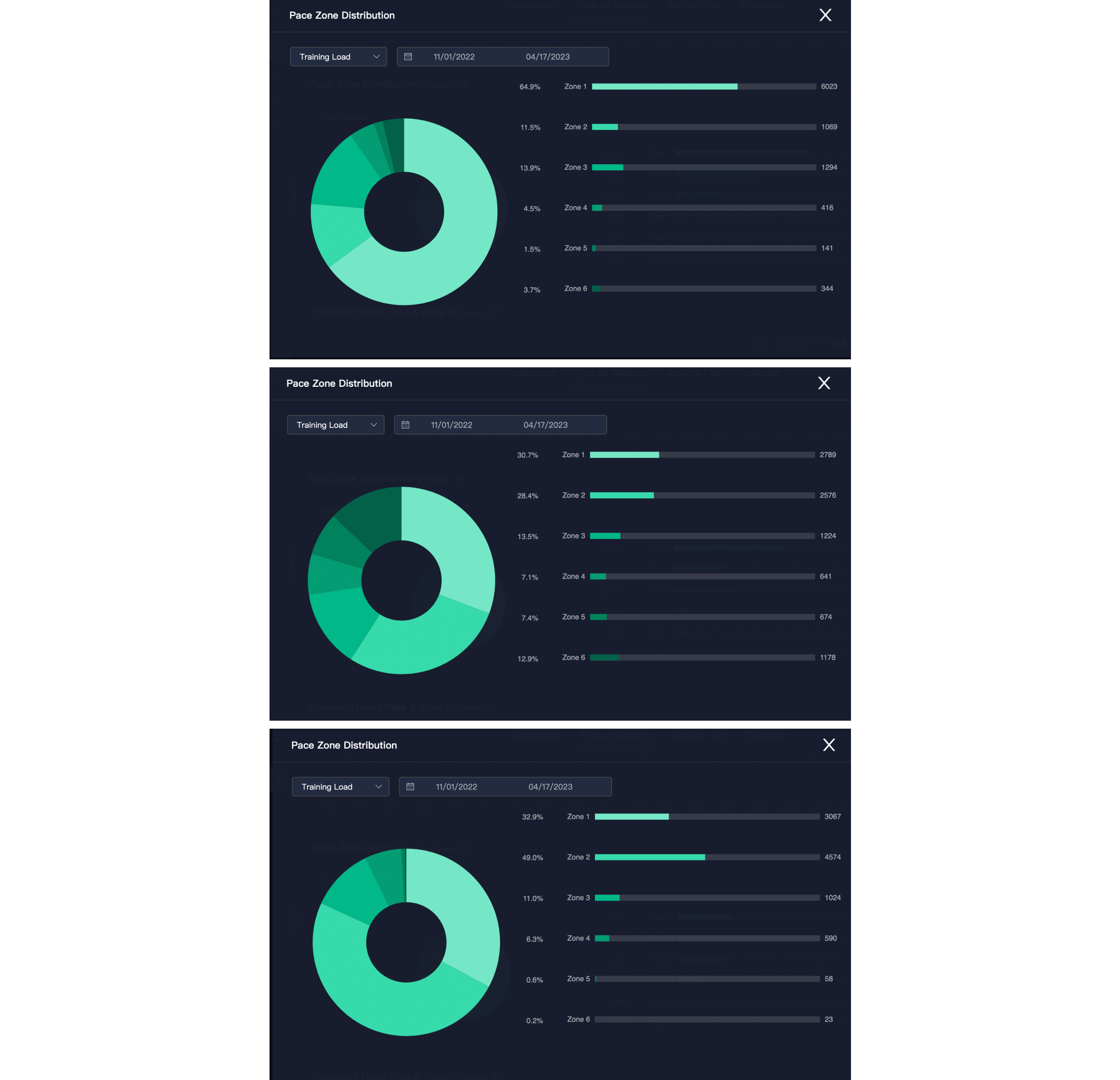 Darian vs. Elizabeth vs. Caitlyn. Training Volume is tracked within the COROS Training Hub.
Darian vs. Elizabeth vs. Caitlyn. Training Volume is tracked within the COROS Training Hub.
Training volume is the key for any marathoner looking to improve over time. The data above is a 24-week total running volume.
Note: Elizabeth experienced an illness throughout the spring that caused lower overall volume, but she was back to regular training 6-8 weeks before race day.
- Darian: 88.25 miles/week average
- Elizabeth: 16.73 miles/week average (Illness)
- Caitlyn: 42.62 miles/week average
Intensity of Training
 Darian vs. Elizabeth vs. Caitlyn. Ensure training in the correct zone with Pace Zone Distribution chart.
Darian vs. Elizabeth vs. Caitlyn. Ensure training in the correct zone with Pace Zone Distribution chart.
This chart is quite telling. We see a few similarities between all amateurs, their volume, and training intensity. The more volume athletes do, the more time in Zone 1 we see. Zone 1 within the COROS eco-system is your Aerobic Endurance. The only way to sustain higher training volume and more efficient running is to build time in Zone 1. As athletes spend less time training, they tend to exercise at a higher intensity and put more pressure on their Aerobic Power (zone 2) and Threshold (zone 3).
An excellent takeaway for amateurs looking to improve is to aim to build volume in Zone 1, but if you have limited time available, you’ll want to sprinkle in more Zone 2 and 3.
Building Fitness Properly
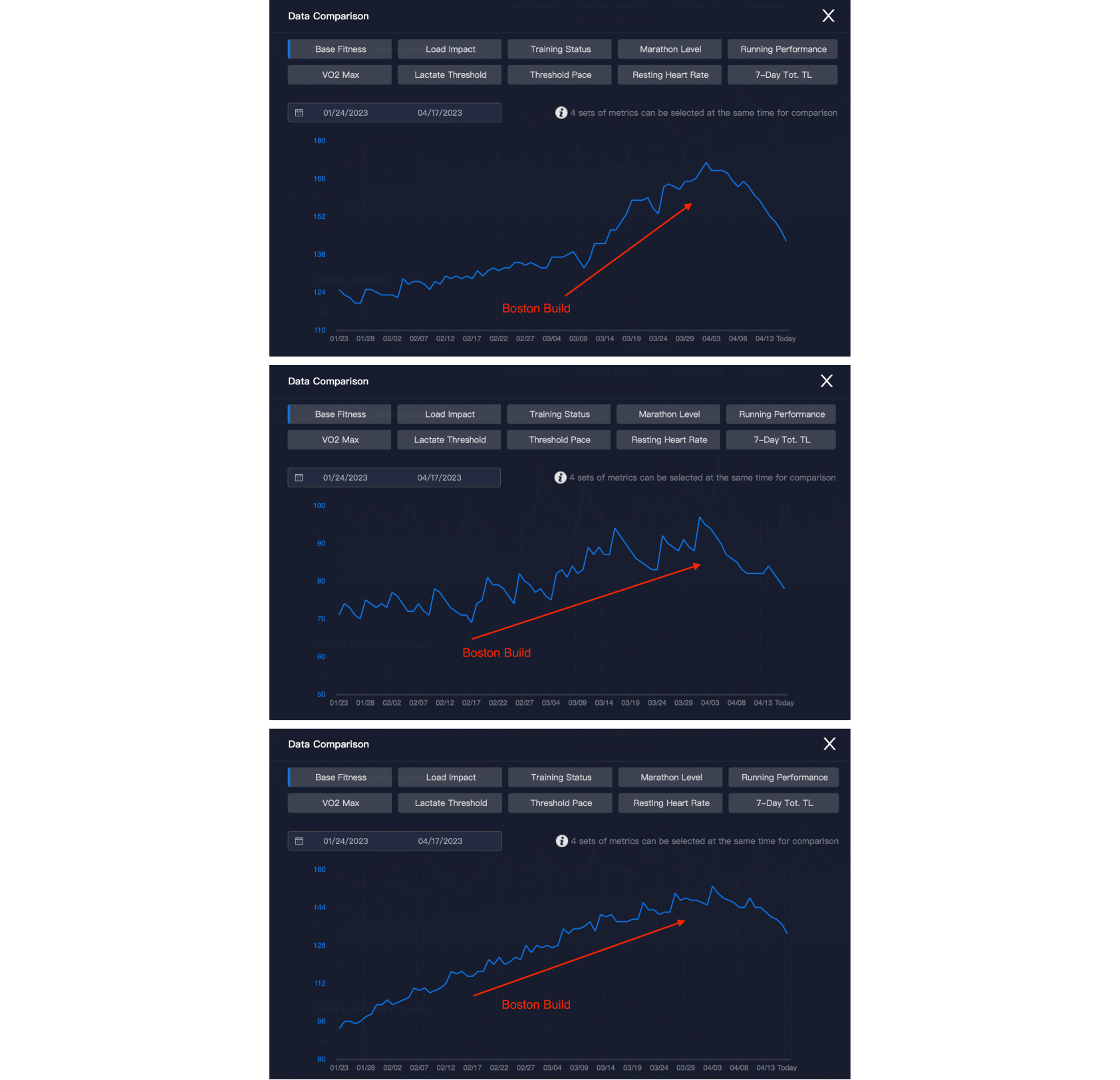 Darian vs. Elizabeth vs. Caitlyn. Base Fitness measures your 42-day average Training Load.
Darian vs. Elizabeth vs. Caitlyn. Base Fitness measures your 42-day average Training Load.
These charts are a fantastic representation of how to build your fitness properly. COROS Base Fitness allows athletes to monitor their workout stress, putting it into a 42-day average. As Darian, Elizabeth, and Caitlyn prepared for Boston, they built their daily Training Load over time. This puts more stress on the body but then allows the body to adapt and grow stronger. Tracking your Base Fitness ensures you’re training properly and building your fitness. Each of them dialed in their 12 weeks leading into race day while showing up to Boston with their best fitness of the year. This is what a proper peak looks like.
Boston Taper
 Darian vs. Elizabeth vs. Caitlyn. Dial in your taper by reducing fatigue heading into race day.
Darian vs. Elizabeth vs. Caitlyn. Dial in your taper by reducing fatigue heading into race day.
The taper. Many amateurs have questions regarding how to taper heading into a peak event. COROS makes this easy, and these athletes nailed it. While you will give up fitness as you rest (that is normal), you are looking to reduce your fatigue to ensure you show up fresh! All of these athletes have a declining fatigue metric heading into race day. Remember, it’s essential to maintain some training as you don’t want to become stale, so COROS recommends a value between 20-40 within our “performance zone.” Darian was 21, Elizabeth was 27, and Caitlyn was 31. They all nailed their build and taper. This is a massive factor in proper training and setting yourself up for qualifying for Boston or maximizing your race!
Threshold and Training Zones
 Darian vs. Elizabeth vs. Caitlyn. To run a faster marathon, you need a faster Threshold.
Darian vs. Elizabeth vs. Caitlyn. To run a faster marathon, you need a faster Threshold.
If you are targeting a Boston qualifier time, you must keep track of your Threshold abilities. You can run a marathon at 80-90% of your Threshold pace. Within the COROS training zones, most Boston qualifier hopefuls will race in their “Aerobic Power” Zone. While building volume is the initial phase of your journey, building Threshold is the critical metric to hit your time. Once your Threshold is high enough, it’s about building time at Aerobic Power to prepare for the demands. If we look at each of these amateur’s Aerobic Power zones and marathon finishing times associated with it, we get:
- Darian: 6:02-6:26/mile (2:38-2:47 marathon finishing time) – meets BQ time
- Elizabeth: 7:47-8:24/mile (3:23-3:40 marathon finishing time) – 40% of the time will BQ
- Caitlyn: 6:57-7:34/mile (3:03-3:20 marathon finishing time) – meets BQ time
Race Day Performances: Boston 2023
Darian Allberry: 2:43:37

Darian ran a fantastic time of 2:43:37, which set a new PR for him! As seen from his data above, Darian could go out easy on the initial downhill section before settling into his average pace of 6:13/mile. His fastest pace came at mile 16 with a net downhill section. Holding 5:57/mile, Darian was still slower than his Threshold pace and well within his abilities. Being a seasoned runner with knowledge and experience, this is a fantastic representation of proper pacing on his way to a new PR!

Elizabeth Pehota: 3:24:23

Elizabeth had a fantastic race! Having limited training in her legs due to illness earlier in the year, her pacing was nearly spot-on throughout the entire race! Finishing in a time of 3:24:23, Elizabeth averaged 7:45/mile. The best mile of her race was the downhill section of mile 11. Running at a pace of 7:27/mile, Elizabeth maintained a cadence of 183 for this section. The key to Elizabeth’s performance was not going out too strong. Having experience at this distance and knowing how to pace, she could operate at the top of her abilities! As seen in the time in zones chart below, she ran quite a bit at her Threshold abilities, which indicates we expect her zones to change overnight as her charts account for her Boston performance!

Caitlyn Miller: 2:59:56

What a fantastic run! Caitlyn went out and beat predicted marathon finishing times by roughly 5 minutes. Athletes often dream of best-case scenarios When they set out for a race. This was one of those days as Caitlyn broke 3 hours and set a pace of 6:46/mile. An even more incredible stat is that Caitlyn’s fastest section of the course was the final half mile. Averaging 6:29/mile, Caitlyn pushed strong to break that sub-3 barrier by 4 seconds. As a testament to her training and preparation, she paced exceptionally well throughout the race and finished with memories that will last a lifetime! Lastly, Caitlyn pushed her body to its limit, as seen from her time in the zones below. Traditionally we see far more time in the Aerobic Power zone for this level of athlete, but Caitlyn put over 1 hour and 41 minutes in her Threshold zone. This data shows that Caitlyn unlocked a new fitness level today as this was a milestone day, and she will reset her zones moving forward for even more improvement.

How COROS Can Help Going Forward
These athletes used COROS Watches and Training Hub data to build, taper, and race. COROS is now offering COROS Coaches to all COROS athletes to go even further. Athletes can directly send their training questions to coach@coros.com and receive personalized feedback based on their data and how best to accomplish their training goals. If you want to qualify for Boston and perform like the best, feel free to reach out and let COROS be a part of your journey! Best of luck to all athletes as you push your limits and explore perfection!

/filters:quality(90)/fit-in/970x750/coros-web-faq/upload/images/613cc4fceb9336801d3604f0cda12285.png)
